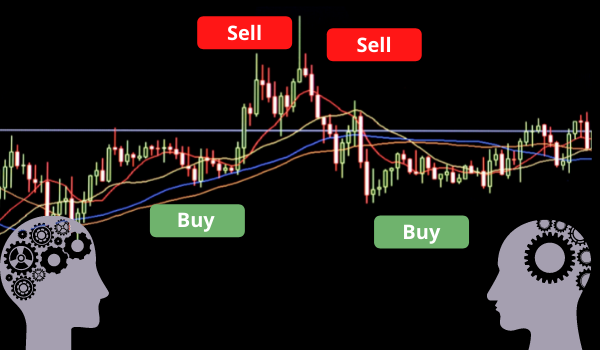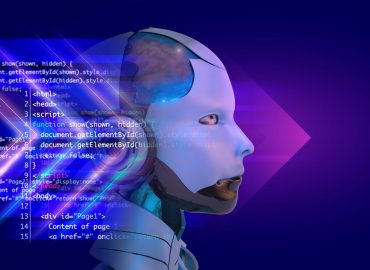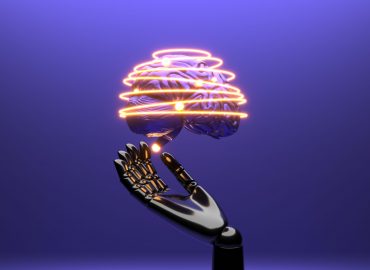Blog ENG
News and trends in the world of data science
Following the latest news and developments in the world of artificial intelligence, or more closely, in the world of data science, can be quite a challenging task. There is a lot of news, trends change day by day, scientific articles are published on a daily basis and it is difficult to filter all the information that arrives and separate the important from the less important. Here we will cover a few topics that have been discussed for quite some time, but more and more often and louder, and some topics and technologies that are just breaking through.
Deepfake
Deepfakes are a technology that has been written about for a long time and lately it is the reason for more and more discussions both in the technological and in the everyday world. Deepfake media are artificially created files, most often in image, audio or video format, in which a person and/or their voice in an existing image, sound recording or video is replaced by someone else’s character. Of course, we are not talking about photoshop skills as a sophisticated copy-paste process, but about much more complex processes that take place in the background. Although the very act of falsifying content is probably as old as the content itself, deepfakes use very powerful machine learning techniques to manipulate and generate the content. The main methods used to create deepfake content are based on deep learning and include the training of generative neural networks, such as autoencoders and generative adversarial networks (GANs).

in which a person is replaced by someone else’s character
Deepfakes are considered one of the most dangerous uses of artificial intelligence. Cybersecurity companies believe that the popularity of deepfakes will increase further in 2022 and that this is something we need to pay attention to. Deepfake technology is definitely an example of releasing the genie in a bottle, and once its development has started, there is no going back to the previous state. Unfortunately, most real-world applications of deepfakes have fraudulent and discrediting intentions. One of the first cases involving the malicious use of deepfakes occurred in the UK. The creators of the deepfake content, in this case fraudsters, called the CEO of an energy company in the UK, faked the voice of his superior in Germany and ordered him to transfer 220,000 euros to the bank account of a third party, the fraudster. Deepfakes can be a very powerful tool in the hands of blackmailers, not only in the form of large financial losses but also in the form of human lives.
Deepfake content has not spared even famous and influential people such as actors, singers, politicians, etc. Many famous women have fallen victim to deepfake pornography. Among them were Scarlett Johansson, Jennifer Lawrence, Emma Watson and Gal Gadot. The wives of different statesmen and politicians, such as Michelle Obama, Ivanka Trump and Kate Middleton were also affected by this. Several years ago, footage of former US president Barrack Obama insulting then-president Donald Trump appeared. Also, another video showed Donald Trump mocking Belgium for its membership in the Paris Agreement, and there was another one where a speech by US politician Nancy Pelosi was processed to make the audience believe she was drunk.
However, not all applications of deepfake technology are malicious. I believe that at some point we’ve all tried at least one of the apps that use deepfakes, whether it’s an app that loads our images and after one click turns us into 80 year olds or maybe changes our gender. The Snapchat camera has a face swap feature since 2016. TikTok uses this technique to allow users to switch faces in videos. Disney Research Studios is working on their own deepfake visual effects technology, and in the film Rogue One: A Star Wars Story, deepfakes were used to recreate the faces of Princess Leia and Grand Moff Tarkin. In October last year, Adobe unveiled Project Morpheus, which is basically a video version of their company’s Neural Filters. These are filters that use machine learning to adjust the subject’s appearance, adjusting some characteristics such as their age, hair color, and facial expression. Morpheus brings all these adjustments, but in video content, with the addition of several new filters, such as the ability to change facial hair and glasses.
However, with all the malicious applications of deepfake technology, the question is how to prevent them. Some of the leading technology companies are developing their own deepfake detection solutions. Microsoft and Google have provided datasets so that developers can use them and train their own systems that detect deepfakes.Facebook, along with Microsoft, Amazon Web Services and leading universities around the world, has released the DeepFake Detection Challenge (DFDC) to develop a solution for deepfake video detection. The dataset used in the competition was created by Facebook with paid actors who agreed that their data can be used and manipulated when creating the dataset. The prize for the winner of the competition was $500,000 and the winning model achieved an accuracy of 65.18% on the black box data set.
Deepfakes are still a new technology with a lot of potential. Mankind is still getting familiar with it and has not yet found its full application in our society, and like many other technologies, it has its advantages and disadvantages. It will take us time to figure out how to make the most of it in different industries. Over the time it will become much more controlled, as has been the case with many other innovations in the past.
Algorithmic trading
Algorithmic trading is a term that has been in use for a long time and its popularity has grown significantly since the early 1980s. Algorithmic trading is the process of executing orders automatically via pre-programmed trading instructions, taking into account variables such as price, time and volume. These are detailed instructions for buying and selling, and the trader or investor writes a code that performs the business on behalf of the trader or investor when certain conditions are met. This type of trading tries to take advantage of the speed and computational resources of computers compared to human traders. Algorithmic trading uses complex formulas, combined with mathematical models and human supervision, to make decisions about buying or selling financial securities on the stock exchange. Algorithmic traders often use high-frequency trading technology, which can allow a company to make tens of thousands of transactions per second. Algorithmic trading also allows for faster and easier order execution, making it attractive for exchanges.

or selling financial securities on the stock exchange
The use of algorithms in trading increased during the 1970s. In the 21st century, algorithmic trading is drawing attention with both retailers and institutional retailers. It is widely used in investment banks, pension funds, investment funds and many similar financial institutions. A 2019 survey found that about 92% of Forex trading was done by trading algorithms, not humans.
Author Michael Lewis drew public attention to high-frequency algorithmic trading when he published the book Flash Boys. Recently, the practice of do-it-yourself algorithmic trading has become more widespread. Hedge funds, such as Quantopian, take algorithms from amateur programmers who compete to win commissions for writing the most profitable code.
However, although the speed that algorithmic trading is bringing to order execution is certainly an advantage in common circumstances, on the other hand it can become a problem in cases when multiple orders are executed simultaneously but without human intervention. Algorithmic trading, among other things, is blamed for the flash crash of 2010. Another disadvantage of algorithmic trading is that liquidity, which is created by quick buy and sell orders, can disappear in an instant, eliminating the opportunity for traders to profit from price changes.
Today, there is a lot of software for algorithmic trading, from simple to very complex, for more professional users. One of the most popular tools available to retailers is called MetaTrader 5.
Ithaca
When we talk about predictions, we usually think of predicting the future events. However, Ithaca is a tool that predicts the past. A company called DeepMind developed Ithaca, a tool for restoring and placing ancient texts in the place and time to which they belong through the collaboration of artificial intelligence with historians. Written remains are very important to today’s understanding of past civilizations and the world we live in. Ancient civilizations began writing on stone, ceramics, metal and other materials to document and transmit the knowledge. Unfortunately, many of these records are incomplete and damaged over all these years or have been moved from the place where they were originally created and interpreting such records is very difficult and requires a lot of time and effort.

over the years. Ithaca is a tool that uses machine learning to recognize missing text and places it
in the place and time to which it belongs. Source: Artemidoro, Public domain, via Wikimedia Commons
In developing this tool, DeepMind collaborated with the Department of Humanities of Ca ‘Foscari University in Venice, the Classical Faculty of the University of Oxford and the Department of Informatics of the University of Economics in Athens. The aim was to explore how machine learning can help historians interpret incomplete historical inscriptions and thus give a better understanding of parts of ancient history and unlock the potential for collaboration between artificial intelligence and historians.
The tool was introduced on March 10th, 2022 in an article published in the Nature journal. Named after a Greek island, Ithaca is a deep neural network capable of performing the tasks of restoring missing text on damaged inscriptions, identifying the original location of a document and helping determine the date when they were created. This is actually an upgrade to Pythia, a DeepMind system that focused on text recovery.
The network is trained on inscriptions written in ancient Greek, and Ithaca’s architecture is based on transformers using a self-attention mechanism. Evaluating models, Ithaca achieved 62% accuracy in the task of restoring damaged texts, 71% accuracy in identifying the original location of documents, and can determine the date of text creation within a period of 30 years. Historians are now using this tool to re-evaluate significant periods of Greek history. DeepMind, in collaboration with Google Cloud and Google Arts & Culture, has launched a free interactive version of Ithaca, and has publicly released the code, a pre-trained model and an interactive notebook.
Ancient Greece plays a key role in our understanding of history, but it is still only one part of the whole picture of civilization. New versions of Ithaca that are currently being worked on will be even better and trained in other ancient languages. So far, historians can use their own datasets and apply current architecture to study other ancient writing systems, from Akkadian to Demotic and Hebrew to Mayan. Ithaca is just the beginning of the development of such tools and highlights the potential of the collaboration between machine learning and the humanities.
References:
- RecFaces, Deepfake: Everything You Need to Know About What It Is & How It Works, available at: https://recfaces.com/articles/what-is-deepfake
- Wikipedia, Algorithmic trading, available at: https://en.wikipedia.org/wiki/Algorithmic_trading
- Investopedia, Algorithmic trading, available at: https://www.investopedia.com/terms/a/algorithmictrading.asp
- Kissell, Robert, Algorithmic Trading Methods
- DeepMind, Ithaca, available at: https://deepmind.com/blog/article/Predicting-the-past-with-Ithaca

